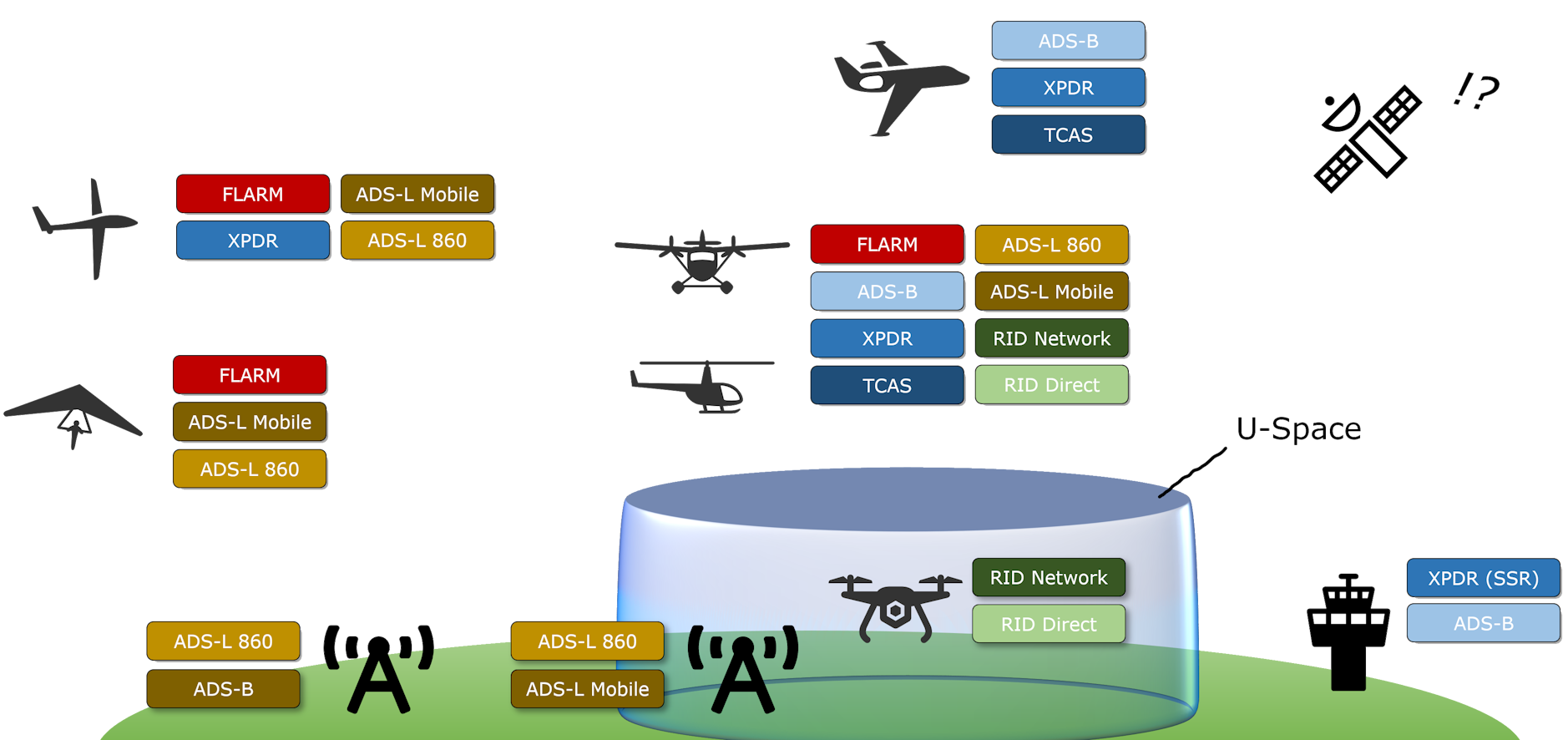Electronic Conspicuity and ADS-L
Electronic visibility (EC): From monitoring to safety
In the field of aviation, the concept of electronic visibility (EC) is rapidly becoming indispensable. The aim is to improve the visibility and recognisability of aircraft electronically for both ground observers (e.g. air traffic control) and other aircraft to complement the pilot’s visual observation. This approach addresses the limitations of relying solely on visual identification, thereby increasing safety. Solutions such as FLARM and Automatic Dependent Surveillance-Broadcast (ADS-B) are both expressions of this same concept.
ADS-L
In 2022, the European Aviation Safety Agency (EASA) introduced the concept of ADS-L (ADS-B “light”). Originally designed for the surveillance of manned aircraft in U-Space airspace, as required by Article 6005 of the Standardised European Rules of the Air (SERA), ADS-L led to the creation of two standards: networked and broadcast. Each standard offers unique benefits and addresses different safety aspects, contributing to a comprehensive EC ecosystem.
Interoperability: Bridging the gap between EC systems
With the increasing complexity of the EC landscape, interoperability becomes crucial. This process involves allowing different EC systems to communicate with each other to improve their overall effectiveness. Interoperability can be achieved through ground stations that rebroadcast or relay signals (this includes mobile networks such as 4G), multi-function in-cockpit devices or a combination of these.
The following picture shows the expected EC landscape by 2026.

Adaptability and selective integration: the way forward
The increasing complexity of EC is undeniable. However, it is crucial to understand that EC is not intended to replace FLARM. Rather, it serves as a complementary solution to enhance existing safety measures for a more robust and safer aviation environment.
In this context, FLARM will continue to adopt and integrate effective functions from the EC landscape that offer added value for users. This adaptive approach ensures that the best practices and technologies are used to optimise safety.
To summarise, the development of electronic visibility in aviation marks a major step towards improving the visibility and safety of aircraft. With continued technological developments such as ADS-L and a focus on interoperability, the aviation industry is moving towards a future with safer skies. However, significant challenges such as interoperability and the inherent complexity of new approaches remain.